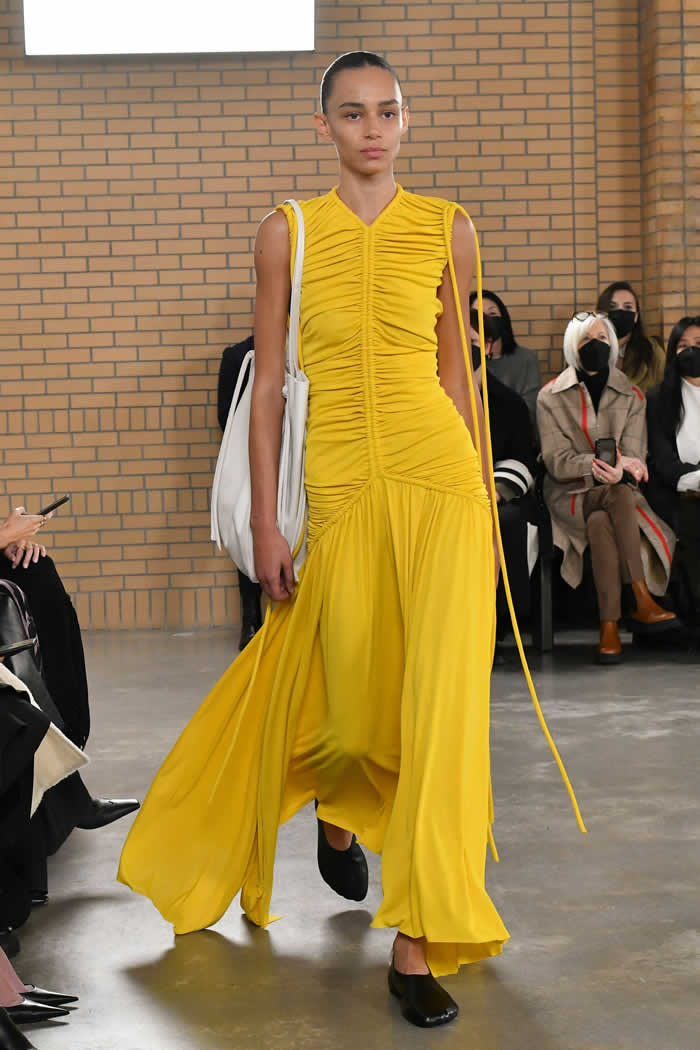Comfort and ease are fashion’s buzzwords of the moment, relics of a lockdown that remain even as the emergence we’ve been hoping for starts to take shape. The corseted silhouettes that were the first Proenza Schouler signature, however, have been completely rethought for today, constructed from machines that knit in circles, allowing for a seamless, molded look.
Can a strapless dress with volume evocative of 18th-century panniers really feel effortless? Yes, if it’s in sculpted knitwear with a circular bias-cut skirt. Hernandez and McCollough gave their tailoring the same waisted look by accessorizing suits with torso-spanning body shapers, or by cutting jackets and coats to wrap across the midriff and button off to the side, the cloth equivalent of a firm hug.
If this outing was a reappraisal of their past, it wasn’t reliant on it. A loose-fitting shirtdress with a fluid looped hem stood out for its color, a vibrant purple that they’ve avoided before. The animal print is another new indulgence. At a pre-fall appointment in December, they said they once deemed it too obvious. Their idea here was to allow the print to glitch as if the color didn’t take in the folds and creases of the fabric as it went through the machine.
Ottessa Moshfegh provided a short story that the designers distributed on the show’s bench seats; its title asked: “Where Will We Go Next?” That’s a good question, but formality with a side of imperfection—with the stuffing pulled out of it—feels right for the moment we’re in.

